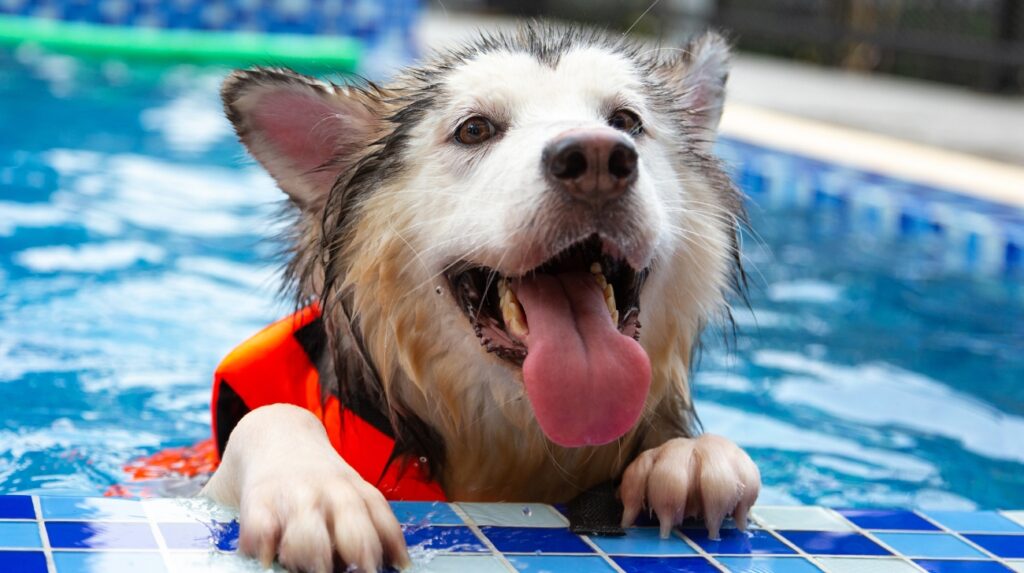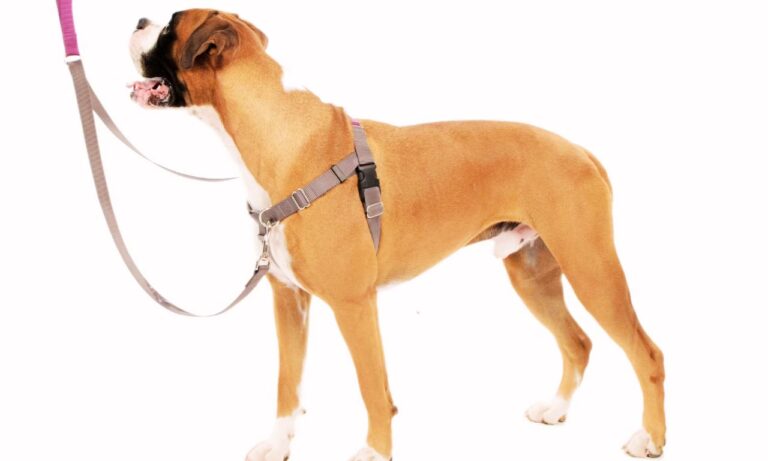Dog shock collars, also known as electronic collars or e-collars, are widely used by pet owners and trainers to correct unwanted behaviors in dogs and reinforce desired behaviors from a distance. So, do dog shock collars work in water? These collars work by delivering a small electric shock to the dog’s neck, which can range from a mild tickle to a stronger jolt depending on the settings and the specific device.
While their use is controversial due to concerns about their impact on a dog’s mental and physical well-being, they remain a popular tool for many dog owners. One of the frequently asked questions about shock collars is whether they are suitable for use in water or wet conditions.
Understanding how these collars function in different environments, particularly in water, is essential for the safety and effectiveness of the device. Do shock collars work for bad behavior in dogs? – Learn how shock collars may help manage unwanted dog behaviors and explore alternatives to these devices.
Blog Highlights
ToggleUnderstanding Waterproof vs. Water-Resistant Shock Collars
When it comes to using shock collars in water, the first and most crucial factor to consider is whether the collar is waterproof or merely water-resistant.

Water-Proof Collar
A waterproof shock collar is designed to prevent water from entering the internal components of the collar, protecting it from damage and ensuring that it functions correctly even in wet conditions. Waterproof collars are usually rated according to the Ingress Protection (IP) scale, which indicates their resistance level to both dust and water.
For example, a collar with an IP67 rating can be submerged in water up to 1 meter deep for about 30 minutes without sustaining damage. This makes it suitable for use in rain or during short swims. However, not all shock collars offer this level of protection.
Water-Resistant Collar
On the other hand, water-resistant shock collars can withstand light rain or occasional splashes but are not built for full submersion. They may protect against a few drops or a light drizzle but can malfunction or break down if exposed to heavier rain, puddles, or swimming activities.
If water enters the device, it could short-circuit the electronic components, leading to potential malfunctions that could harm the dog. Therefore, dog owners must understand the difference between waterproof and water-resistant collars to avoid accidental damage to the device and unintentional harm to their pets. Does a shock collar work on a German Shepherd? – Discover whether shock collars are effective for training German Shepherds and how they should be used.
Evaluating Shock Collar Safety in Aquatic Environments
Using a shock collar in water raises several safety considerations that pet owners must be aware of to avoid accidents and ensure the well-being of their dogs. First and foremost, it’s essential to recognize that not all waterproof shock collars are designed to be fully submerged for extended periods. While a waterproof collar can handle brief exposure to water or light swimming, prolonged submersion might compromise its effectiveness.
Each collar will have specific guidelines regarding the depth and duration it can remain underwater, and exceeding these limits could lead to water seeping into the device, damaging the internal components, and potentially delivering unintended shocks.

Moreover, if the collar is not properly sealed or the waterproofing is damaged over time, the device could pose an electrocution risk to the dog. Although the likelihood of such an event is minimal with high-quality, well-maintained waterproof collars, the risk increases with cheaper or poorly maintained devices.
Ensuring that the shock collar is in good working condition and checking for any signs of wear and tear, especially around the battery compartment and the points where water could enter, is vital before allowing the dog to enter the water. Best dog shock collar for German Shepherd – Check out the top shock collars specifically designed for German Shepherds, focusing on performance and safety.
Potential Risks of Using Shock Collars in Water
So, do dog shock collars work in water? While waterproof shock collars are designed to withstand exposure to water, they still come with certain risks that need to be managed carefully.

1. Corrosion
One of the potential risks of using shock collars in water is corrosion. If your dog frequently swims in saltwater, the salt can accumulate on the metal components of the collar, leading to corrosion over time.
Corrosion can degrade the collar’s functionality, resulting in inaccurate or unintended shocks, which can be painful or confusing for the dog. To prevent this, it is advisable to choose collars that are both waterproof and corrosion-resistant, especially if your dog swims in the sea or other saltwater bodies.
2. Malfunction of Battery
Additionally, there is the issue of battery life and malfunction. Many waterproof shock collars rely on rechargeable batteries. Water exposure, particularly in saltwater, can shorten the battery life or cause the battery compartment to malfunction.
Regular inspection and maintenance of the collar are necessary to ensure that it remains functional and safe for the dog. If the collar starts malfunctioning due to water damage, it could deliver shocks at inappropriate times, which might lead to behavioral issues or fear in the dog. Difference between e-collar and shock collar – Understand the key differences between e-collars and shock collars to make an informed decision for your dog’s training needs.
How to Use Shock Collars Safely in Water?
To use a shock collar safely in water, follow a few key guidelines. Start by ensuring that the collar is explicitly labeled as waterproof and not just water-resistant. Check the collar’s IP rating to understand the level of water protection it offers.
An IP67 rating, for instance, indicates that the collar can be submerged in water up to 1 meter deep for 30 minutes, making it suitable for short swimming sessions or playing in shallow water. However, collars with higher ratings, such as IP68, offer better protection for more extended periods and in deeper water.

Before allowing your dog to swim with the collar, test it yourself by submerging it in water for a few minutes to see if it remains functional. It’s also essential to monitor your dog while swimming to ensure that the collar does not malfunction or cause discomfort.
After each swim, rinse the collar with fresh water to remove any salt or debris that might have accumulated and dry it thoroughly before the next use. These steps will help extend the collar’s life and maintain its functionality while ensuring your dog’s safety. Best remote control dog training collar – Find the most effective remote-control dog training collars that offer versatility and ease of use.
Alternatives to Shock Collars in Water
For dog owners who are concerned about the risks associated with using shock collars in water, there are several alternatives that might be more suitable.
1. Positive Reinforcement Training
Positive reinforcement training is a highly effective method for modifying dog behavior without the need for aversive tools like shock collars. This approach involves rewarding desired behaviors with treats, praise, or play, making the training experience enjoyable for the dog and fostering a stronger bond between the pet and the owner. Positive reinforcement is especially useful for dogs who are sensitive to electric shocks or who have a history of anxiety or fear-related behaviors.
2. Sound-Based or Vibration Collars
Another alternative is the use of sound-based or vibration collars, which can signal a dog without delivering a shock. These collars are particularly effective for dogs that need guidance or attention in noisy environments or when off-leash. They can also be used safely in water, provided they are waterproof. In addition to these options, physical barriers such as fences or leashes can provide effective ways to control a dog’s behavior without relying on electronic devices. Each alternative has its pros and cons, but they generally offer a safer, more humane approach to training compared to shock collars.
The Debate on Shock Collars: Pros and Cons
The debate over the use of shock collars for dog training is ongoing, with advocates and opponents presenting strong arguments. Proponents of shock collars argue that they can be highly effective for managing and correcting undesirable behaviors from a distance. For example, if a dog is prone to running away, a shock collar can provide immediate feedback that discourages the behavior and encourages the dog to return to the owner. This is particularly useful in situations where the dog is too far away to respond to verbal commands or other cues.

However, opponents of shock collars point out that while these devices can suppress undesirable behaviors, they do not address the underlying causes of the behavior. For instance, a dog may bark excessively due to anxiety, fear, or lack of socialization. Using a shock collar to stop the barking does not address these root causes and may even exacerbate the problem by increasing the dog’s anxiety or fear.
Therefore, many animal behaviorists and trainers advocate for alternative methods, such as positive reinforcement training, that focus on building trust and understanding between the dog and the owner. How to remove saliva stains from white dog fur – Discover practical methods for removing stubborn saliva stains from your dog’s fur without damaging their coat.
Wrap Up!
In conclusion, shock collars can work in water if they are designed to be waterproof and are used correctly according to the manufacturer’s guidelines. However, there are several factors to consider before using these collars in aquatic environments, such as ensuring the collar’s IP rating is suitable for the intended level of water exposure and understanding the potential risks involved.
Pet owners should weigh the benefits and drawbacks of using shock collars, especially in water, and explore alternative training methods that may offer safer and more humane solutions for managing their dogs’ behavior. Consulting with a veterinarian or professional dog trainer can provide valuable insights and help determine the most appropriate training tools for your pet’s unique needs.
Hope so, now you know do dog shock collars work in water. Best shock collar for large dogs with thick fur – Explore the best shock collars that are suited for large dogs with thick coats, ensuring comfort and effectiveness.





